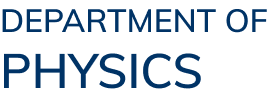Abstract
In this thesis, we report the application of machine learning in physics, including inverse design and clustering. With rapid advancements in machine learning algorithms, many researchers are leveraging these tools to solve various physical problems. These algorithms offer significant advantages, including speed, cost reduction, and the ability to detect subtle features that may be overlooked by humans, highlighting their vast potential. Here, we focus on two specific physics problems.
The first problem is the inverse design of metamaterial microwave absorbers. While metamaterial microwave absorbers are widely used in electromagnetics, traditional design methods often require extensive time and effort to fine-tune parameters. We propose a tandem artificial neural network for the inverse design of metamaterial microwave absorbers, incorporating physical constraints into the cost function. This allows us to achieve effective end-to-end design of high-performance microwave absorbers.
The second problem focuses on the clustering of non-Abelian topological phases, which have attracted attention from researchers in recent years for their unique properties. The complicated dataset of the non-Abelian system poses challenges for automated classification. We employ an unsupervised learning method based on the diffusion map algorithm for clustering non-Abelian phases without the need to calculate topological charges. Moreover, our algorithm can automatically infer the multiplication table of the non-Abelian charges carried by the samples. In addition, our approach can do the correct topological classification in the context of homotopy both with and without a fixed base point, highlighting the role of the fixed base point in non-Abelian topology.
In summary, this thesis illustrates the immense potential of machine learning in addressing physical problems. Machine learning-based inverse design offers significant convenience for device design. Even in the absence of prior knowledge in topological physics, data-driven automatic clustering algorithms have successfully achieved challenging non-Abelian topological classifications. These two contributions pave the way for the further combination of machine learning algorithms and physics. It is believed that these works can provide additional perspectives for further exploration of machine learning applications in the field of physics.
